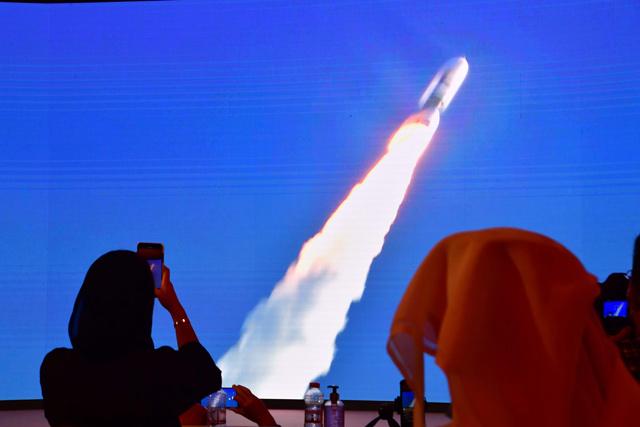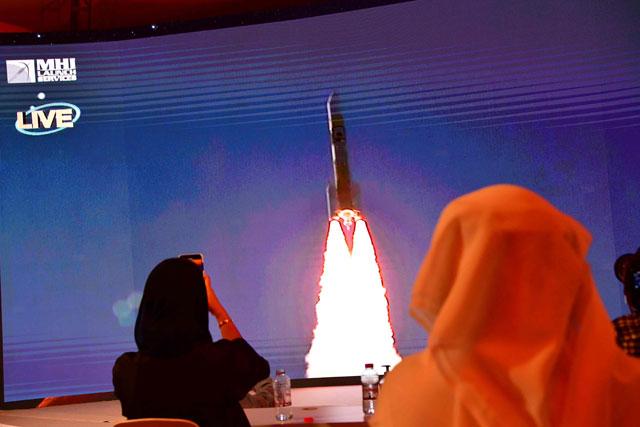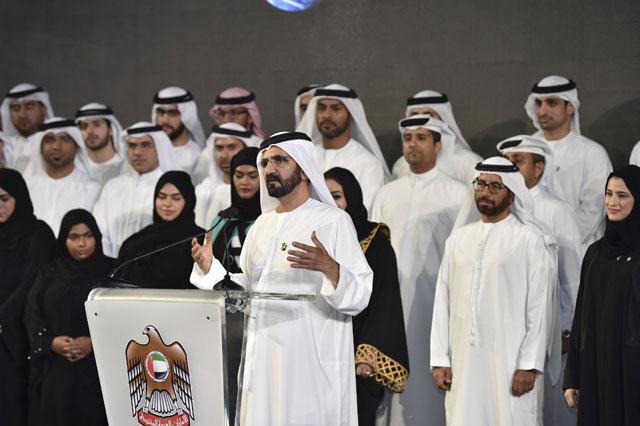You are here
UAE's 'Hope' probe to be first in trio of Mars missions
By AFP - Feb 08,2021 - Last updated at Feb 08,2021

This file photo taken on July 20, 2020, shows a screen broadcasting the launch of the 'Hope' Mars probe at the Mohammed Bin Rashid Space Centre in Dubai (AFP photo)
DUBAI — The first Arab space mission, the UAE's "Hope" probe, is expected to reach Mars' orbit on Tuesday, making it the first of three spacecraft to arrive at the Red Planet this month.
The United Arab Emirates, China and the United States all launched projects to Mars last July, taking advantage of a period when the Earth and Mars are nearest.
If succesful, the Gulf state will become the fifth nation to ever reach Mars — a venture timed to mark the 50th anniversary of the unification of the UAE — with the China mission due to become the sixth the following day.
Landmarks across the UAE have been lit up in red at night, government accounts emblazoned with the #ArabstoMars hashtag, and on the big day Dubai's Burj Khalifa, the world's tallest tower, will be at the centre of a celebratory show.
"Hope", known as "Al-Amal" in Arabic, will orbit the planet for at least one Martian year, or 687 days, while the Tianwen-1 from China and the Mars 2020 Perseverance rover from the US will both land on Mars' surface.
Only the US, India, the former Soviet Union and the European Space Agency have successfully reached the Red Planet in the past.
Risky manoeuvre
After blasting off from Japan last July, the Hope mission now faces its "most critical and complex" manoeuvre, according to Emirati officials, with a 50-50 chance of successfully entering a Mars orbit.
The spacecraft must slow significantly to be captured by Martian gravity, rotating and firing all six of its Delta-V thrusters for 27 minutes to reduce its cruising speed of 121,000 kilometres per hour to about 18,000 kph.
The process, which will consume half of its fuel, will begin on Tuesday at 15:30 GMT and it will take 11 minutes for a signal on its progress to reach ground control.
Omran Sharaf, the UAE mission’s project manager, said it was a “huge honour” to be the first of this year’s missions to reach Mars.
“It is humbling to be in such auspicious and skilled company as we all embark on our missions,” he said. “It was never a race for us. We approach space as a collaborative and inclusive effort.”
While the Hope probe is designed to provide a comprehensive image of the planet’s weather dynamics, it is also a step toward a much more ambitious goal — building a human settlement on Mars within 100 years.
While cementing its status as a key regional player, the UAE also wants the project to serve as a source of inspiration for Arab youth, in a region too often wracked by sectarian conflicts and economic crises.
Hope will use three scientific instruments to monitor the Martian atmosphere, and is expected to begin transmitting information back to Earth in September 2021, with the data available for scientists around the world to study.
Close behind
China’s Tianwen-1, or “Questions to Heaven”, has already sent back its first image of Mars — a black-and-white photo that showed geological features including the Schiaparelli crater and the Valles Marineris, a vast stretch of canyons on the Martian surface.
The 5 tonne Tianwen-1 includes a Mars orbiter, a lander and a solar-powered rover that will for three months study the planet’s soil and atmosphere, take photos, chart maps and look for signs of past life.
China hopes to land the 240 kilogramme rover in May in Utopia, a massive impact basin on Mars. Its orbiter will last for a Martian year.
Tianwen-1 is not China’s first attempt to reach Mars. A previous mission with Russia in 2011 ended prematurely when the launch failed.
NASA’s Perseverance, which is set to touch down on the Red Planet on February 18, will become the fifth rover to complete the voyage since 1997 — and all so far have been American.
It is on an astrobiology mission to look for signs of ancient microbial life and will attempt to fly a 1.8 kilogramme helicopter-drone on another world for the first time.
Perseverance, capable of autonomously navigating 200 metres per day, will collect rock samples that could provide invaluable clues about whether there was ever past life on Mars.
About the size of a small SUV, it weighs a metric tonne, has 19 cameras and two microphones — which scientists hope will be the first to record sound on Mars.
The mission is set to last at least two years.
Related Articles
TOKYO — The first Arab space mission to Mars, an unmanned probe dubbed "Hope", blasted off from Japan on Monday on a mission to reveal more
DUBAI — A tense half-hour on Tuesday will determine the fate of the UAE's "Hope" probe to Mars, as the Arab world's first space mission carr
Oil-rich United Arab Emirates said Wednesday it was pressing ahead with plans to send the first Arab unmanned probe to Mars by 2021, naming it "Hope".



















